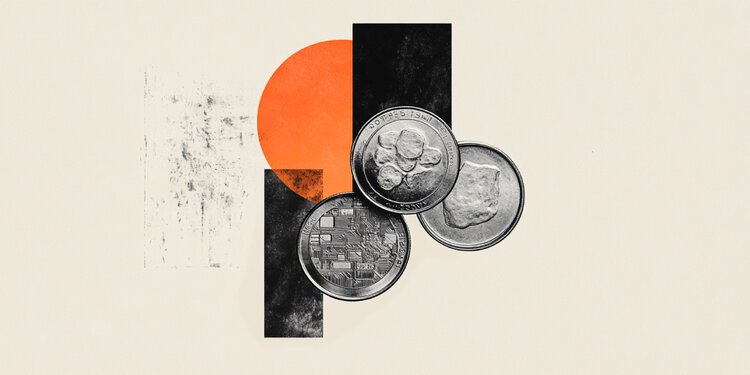- Gold price edges lower amid an uptick in the US bond yields, though the downside seems cushioned.
- A positive risk tone is seen as another factor undermining demand for the safe-haven precious metal.
- Traders, however, might prefer to wait for the US NFP report on Friday before placing aggressive bets.
Gold price (XAU/USD) meets with a fresh supply on Thursday and erodes a part of the previous day’s recovery gains from a nearly four-week low. The Federal Reserve (Fed) Chair Jerome Powell told reporters on Wednesday that inflation was too high and progress in bringing it down was uncertain. This, in turn, suggests that the Fed will keep rates higher for longer, which acts as a tailwind for the US Treasury bond yields and undermines demand for the non-yielding yellow metal.
Apart from this, a generally positive risk tone is seen as another factor exerting some downward pressure on the safe-haven Gold price. Meanwhile, the US Dollar (USD) struggles to attract buyers and languishes near a two-week low touched last Friday as Powell downplayed the risk of any further interest rate hikes. This, in turn, could lend some support to the XAU/USD and help limit the downside ahead of the closely-watched US Nonfarm Payrolls (NFP) report on Friday.
Daily Digest Market Movers: Gold price is weighed down by hawkish Fed and positive risk tone
- Federal Reserve Chair Jerome Powell warned on Wednesday that interest rates will remain high for longer as disinflation has slowed in recent months and acts as a headwind for the Gold price.
- The US Treasury bond yields reversed a part of the previous day’s post-FOMC slide, helping revive the demand for the US Dollar and contributing to capping the upside for the non-yielding yellow metal.
- Meanwhile, the global risk sentiment got a boost after Powell signaled that the next move from the Fed was still likely to be an interest rate cut, which further undermines the safe-haven XAU/USD.
- This, along with easing geopolitical tensions, suggests that the path of least resistance for the commodity is to the downside, though the lack of selling warrants caution for bearish traders.
- Investors might also prefer to move to the sidelines ahead of the release of the closely watched US monthly employment details, popularly known as the Nonfarm Payrolls (NFP) report on Friday.
- In the meantime, Thursday’s US economic docket – featuring Challenger Job Cuts, the usual Weekly Initial Jobless Claims, and Trade Balance data – will be looked upon for short-term trading impetus.
Technical Analysis: Gold price manages to hold above the $2,300 mark, 50% Fibo. level holds the key for bulls
From a technical perspective, weakness back below the $2,300 mark now seems to find decent support near the $2,280 level. The latter coincides with the 50% Fibonacci retracement level of the March-April rally, which, if broken decisively, should pave the way for deeper losses. The Gold price might then accelerate the fall towards the next relevant support near the $2,268-2,265 area en route to the $2,230-2,225 region and the $2,200 round figure.
On the flip side, the immediate hurdle is pegged near the $2,335 supply zone ahead of the weekly top, around the $2,352-2,353 area. A sustained strength beyond could lift the Gold price to the $2,371-2,372 resistance en route to the $2,400 round figure and the all-time peak, around the $2,431-2,432 area touched on April 12.
Risk sentiment FAQs
In the world of financial jargon the two widely used terms “risk-on” and “risk off” refer to the level of risk that investors are willing to stomach during the period referenced. In a “risk-on” market, investors are optimistic about the future and more willing to buy risky assets. In a “risk-off” market investors start to ‘play it safe’ because they are worried about the future, and therefore buy less risky assets that are more certain of bringing a return, even if it is relatively modest.
Typically, during periods of “risk-on”, stock markets will rise, most commodities – except Gold – will also gain in value, since they benefit from a positive growth outlook. The currencies of nations that are heavy commodity exporters strengthen because of increased demand, and Cryptocurrencies rise. In a “risk-off” market, Bonds go up – especially major government Bonds – Gold shines, and safe-haven currencies such as the Japanese Yen, Swiss Franc and US Dollar all benefit.
The Australian Dollar (AUD), the Canadian Dollar (CAD), the New Zealand Dollar (NZD) and minor FX like the Ruble (RUB) and the South African Rand (ZAR), all tend to rise in markets that are “risk-on”. This is because the economies of these currencies are heavily reliant on commodity exports for growth, and commodities tend to rise in price during risk-on periods. This is because investors foresee greater demand for raw materials in the future due to heightened economic activity.
The major currencies that tend to rise during periods of “risk-off” are the US Dollar (USD), the Japanese Yen (JPY) and the Swiss Franc (CHF). The US Dollar, because it is the world’s reserve currency, and because in times of crisis investors buy US government debt, which is seen as safe because the largest economy in the world is unlikely to default. The Yen, from increased demand for Japanese government bonds, because a high proportion are held by domestic investors who are unlikely to dump them – even in a crisis. The Swiss Franc, because strict Swiss banking laws offer investors enhanced capital protection.

























